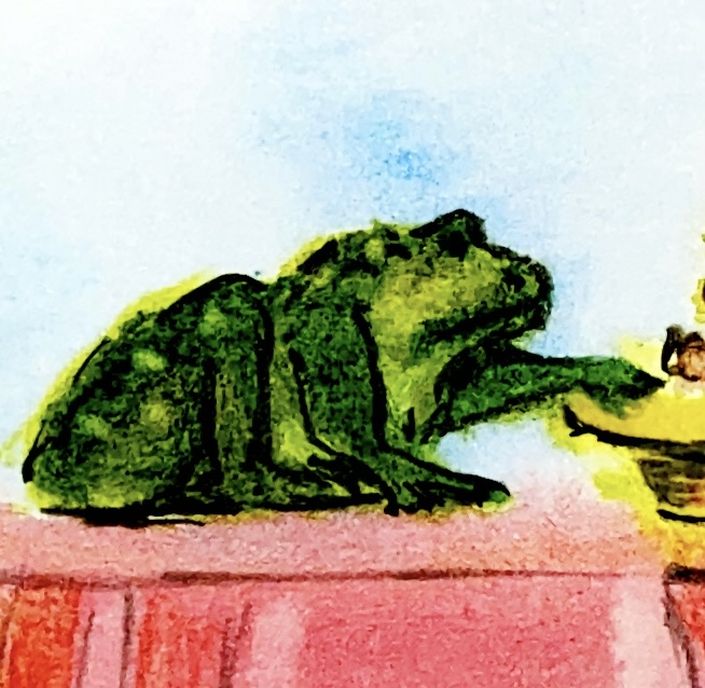
Kindergarten Puppet Play Course
A Year's Worth of Kindergarten Lessons for Your Waldorf Homeschool
This course is designed to help you create a puppet play, which is the next step in the traditional Waldorf three-week story rhythm. During the first week the children hear you tell a story for at least three different days. You try your best to visualize and memorize the sequence of events as well as certain phrasing and vocabulary in order for the story to be repeated each time in a similar way. Kindergarten teachers try to memorize the stories word-for-word, and in-so-doing come close but are rarely perfect. We have a Waldorf adage: "What is important for the children is to see you striving."
This Puppetry course is composed of twelve lessons for a fully year of Waldorf kindergarten curriculum.
What's Included:
- 12 videos demonstrating a complete puppet play performed by experienced Waldorf teachers
- How to create your puppet stage
- Step by step instructions for creating your puppets
- Detailed explanation of the necessary materials for puppet plays
- List of optional additional materials for puppet plays
- Guide to the movement of puppets (gestures)
- Guide to the movement of you, the "puppeteer"
- How to create beginnings and endings
- Considerations in choosing stories for puppet plays, including our thoughts on why we choose to present each at a particular time of the year.
For each puppet play, we share our thoughts on what may be the “soul gesture” — that which your child takes in subconsciously, for each story.
Course Overview
Let's address the most obvious question: Why puppetry?
Children love stories and they love visual portrayals of stories. This is why children love physical portrayals of stories, especially stories they have heard several times. They become enthusiastically interested when the story that they have come to know quite well is turned into a puppet play.
By a similar token, this is why children are also attracted to electronic media on a screen (TV, movies, video games). Let's compare certain aspects of puppetry and electronic media in order to consider and, hopefully, appreciate the real value of bringing stories through puppetry for your child. Of course this will not be as easy as turning on the television or computer, and placing your child in front of it, but your work with puppetry today, in these younger years, will reap lifetime benefits.
You will see throughout our lessons that the set is simple—built mostly with natural objects and fabrics. The puppets are intentionally simple and featureless in order to allow the child’s imagination to participate in creating that which he or she feels would be characterized in their expressions. The characters move from the left to the right side of the set over fabric that is laid out artistically with interesting folds for more dimension. The children become so involved in what they are seeing, that they cannot wait to touch it for themselves afterward. With ordinary visual impressions such as these, the child's eyes are constantly moving and observing while all the senses are engaged in taking in the subtlest nuances of real objects. When presenting your child with a puppet play, you are offering an actual three dimensional experience that has depth and breadth.
In contrast to this, when the child is before a screen, he or she is viewing a two-dimensional perfect, quickly shifting image. Their brain is stimulated to perform fragmentary and associative thought processes, which affects even the fine nerve connections in the brain that are still developing. Furthermore, the immobility of the eyes conveys itself to all the body’s muscles, and the other senses besides hearing and vision are hardly stimulated. Sense organs are easily stupefied and made passive rather than being engaged in ways that support and further healthy development. Sense of direction and movement is artificial.
There is a disassociation with a medium that is perfect, automatic and anonymous, whereas in a puppet show, the puppeteer’s presence gives the child the experience that in order for things to happen, some person must be the moving force. Individual responsibility instead of passive expectation. How many children today become frustrated when things do not happen for them more quickly and easily?
Because the child is naturally more involved in something that is real, participating in a story process that calls upon their imaginative faculties, their inner visualization becomes active as they subconsciously take in the message or soul gesture of the story. There is planted a seed for future conscientious activity when a difficult situation arises in their own world. In fact, one of the greatest benefits to making this a part of your child’s experience, is for you to be able to observe how, when he or she has the opportunity to play with the puppets on their own, they process their feelings in their own puppet play.
Last but definitely not least, this is the beginning of the Waldorf Language Arts curriculum. By choosing well-written tales to remember and retell, the child has a direct experience of eloquent and exemplary language in their mother tongue. In the classic fairy tales from cultures around the world, you will find rich vocabulary, syntax, imagery, and metaphors. Keeping in mind that your child will copy what you do because the young child, especially, learns through imitation, this is a critical point. By the time you create a puppet play, they child will have heard that particular story six times or so throughout the past two weeks. So, not only does the story live within them, the beautiful language does as well. You will see when you go on to the final week of the three-week story rhythm where you perform the "people play", that your child will speak this beautiful language for him or herself without thinking twice about it, because the memory forces have been exercised.
It would be helpful to go through all twelve lessons before beginning yourself, as there are particular aspects brought out in each that will support you on your journey into the joys of puppetry.
Example Curriculum
- Lesson 1: The Little Grey Pony (9:08)
- Lesson 2: The Little Red Hen (8:19)
- Lesson 3: Rumplestiltskin (14:19)
- Lesson 4: The Enormous Turnip (5:04)
- Lesson 5: Star Money (8:51)
- Lesson 6: Mashanka and the Bear (7:55)
- Lesson 7: Turlutin (8:11)
- Lesson 8: Sweet Porridge (5:02)
- Lesson 9: Cat and Mouse (6:35)
- Lesson 10: Boots and His Brothers (15:04)
- Lesson 11: The Three Billy Goats Gruff (5:21)
- Lesson 12: The Woman Who Outshone the Sun (9:19)
Featured First Grade Courses
You also might be interested in our First Grade Courses.



